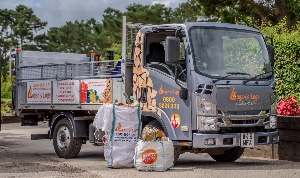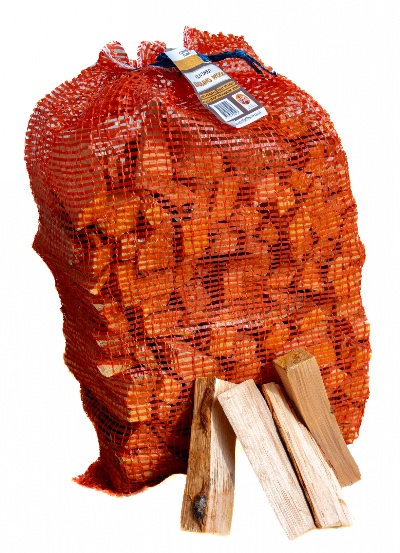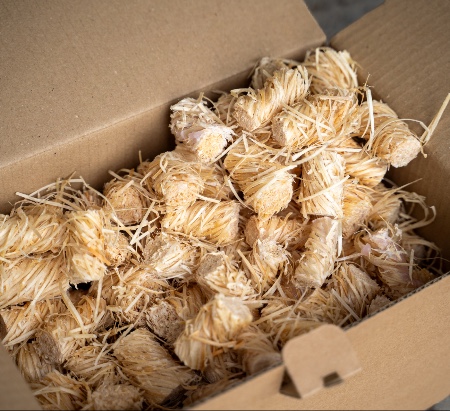Ecodesign Regulations – Efficient Log Burners
In January 2022 new regulations were introduced for solid fuel domestic burning appliances such as wood burning stoves. The move is part of the government’s clean air strategy and aims to reduce emissions and the impact on air quality by limiting air pollution.
If you have a wood burner already installed, you are not affected by the new regulations but if you are having a wood burning stove installed now then these new log burner regulations do affect you. The regulations apply if you are replacing an existing log burning stove or installing a new one from fresh.
Ecodesign wood burning stoves must meet efficient criteria for sale and installation in the UK. Your new wood burning stove must meet minimum gross efficiency of 65%.
What is an Ecodesign Ready Stove?
An Ecodesign ready stove is a stove that meets modern wood burner regulations for efficiency in Europe and the UK. The appliance will have been tested to ensure it meets new emission limits on particulate matter, organic gaseous compounds, carbon monoxide and nitrogen oxides.
It is mandatory to install an ecodesign stove if you are burning solid fuels and they are suitable for use in smoke control areas.
Improved Combustion Technology
Ecodesign stoves are designed to burn fuel more completely at higher temperatures. This ensures fewer unburned gases and particles escape through the flue, resulting in lower emissions and higher overall efficiency.
Tertiary Air Supply
In addition to the primary and secondary air inlets found in older stoves, Ecodesign models often include a tertiary air system. This introduces a final stream of air into the combustion chamber to burn off any remaining gases and particles—significantly reducing carbon monoxide and soot.
Optimised Airflow Control
Modern Ecodesign stoves give users precise control over airflow, allowing the stove to maintain an optimal burn rate. This helps reduce harmful emissions and ensures that the fuel is used as efficiently as possible.
Airwash System for Clean Glass
An integrated airwash system channels air across the inside of the stove’s glass window, helping to keep it clean. This not only provides a better view of the flames but also ensures proper airflow within the firebox for cleaner burning.
Sealed Firebox Construction
The fireboxes in Ecodesign stoves are tightly sealed and made from durable materials such as cast iron or steel. This helps maintain consistent internal temperatures, improving efficiency and reducing the release of unburned particulates.
Enhanced Insulation and Baffle Design
Internal baffles and high-grade insulation materials help to extend the path of hot gases before they exit the flue. This allows more heat to be transferred into your home and gives emissions extra time to burn off inside the stove.
Always Choose Kiln Dried or Smokeless Fuels
Ecodesign stoves are designed for domestic burning to heat your home. To achieve maximum efficiency and heat output, the correct fuel is needed. Wet or unseasoned wood is both poor quality and dangerous to burn so you should choose kiln dried firewood and smokeless coal to burn only.
If you do live in a smoke control area, burning wet or unseasoned wood will create large amounts of smoke (for very low heat output) and contravene the smoke control area rules.
Burning kiln dried firewood is better all round, it outputs much more heat than wet wood and does so without damaging your chimney’s flue liner. Dry wood is better value for money, burns hotter, is safer for you and those in your home and better for the environment.
Firewood should be less than 18% moisture when you purchase it. Look for the Ready to Burn scheme logo. All of the kiln dried firewood we sell here at Logan’s Logs is Woodsure Ready to Burn approved and we use a moisture meter to regularly check out stocks of logs to ensure they are dry.
Protecting Health When You Burn Wood
Burning wood at home can have a direct impact on human health, particularly if the stove is inefficient or the wrong fuel is used. According to the World Health Organization, exposure to harmful emissions such as fine particulate matter (PM2.5) can lead to serious respiratory and cardiovascular problems, especially in vulnerable groups such as children, the elderly, and those with pre-existing health conditions.
The UK Government introduced the Clean Air Act and subsequent Ecodesign Regulations to help limit air pollutantsreleased from domestic burning. These regulations are aimed at improving air quality across the country and reducing the number of illnesses caused by poor air.
Incorrect burning, such as using wet wood or unsuitable fuels, can also increase the risk of carbon monoxide poisoning, a silent and potentially fatal hazard. To protect your household and your community, it’s important to follow official guidance, use certified appliances, and burn only dry, clean fuels that comply with current legislation.
By choosing the right stove and fuel, you’re not only reducing emissions and improving your home’s efficiency—you’re also playing a part in protecting public health and ensuring cleaner air for everyone.
Is the Ecodesign Scheme Perfect?
While Ecodesign Ready stoves are a step in the right direction, the scheme has not been without its critics. Some argue that:
- Laboratory testing doesn’t reflect real-life use: Stoves may perform differently when used by the average person at home, especially if the wrong fuel is used.
- There’s still no legal enforcement for fuel quality post-installation. So even an efficient stove can become highly polluting if you ignore guidance and burn wet wood or household waste (or other unauthorised fuels) and your local authorities can’t really do anything.
- Critics also say the scheme doesn’t go far enough and call to ban burning altogether in urban areas (such as those designated uk smoke control areas) to tackle health issues and improve air quality.
Despite these concerns, the scheme has helped to reduce emissions from domestic heating and raised awareness of approved fuels and proper wood burning practices.
Why Is It So Important to Protect the Environment?
We all rely on clean air, clean water, and a stable climate—but domestic heating, including open fires, garden bonfires, and old, inefficient wood burners, contributes to rising levels of air pollutants in towns and villages.
These pollutants affect not just the atmosphere, but human health—especially for people with asthma, heart conditions, or respiratory issues. Cleaner domestic burning helps create better air quality for everyone.
It’s also important to cut greenhouse gases and pollutants linked to global warming, especially from fossil fuels like gas and coal. Making environmentally-conscious choices for home heating is a practical way to contribute to the solution.
Why Burning Wood Can Be Better Than Gas
At first glance, it might seem strange that burning trees is more environmentally friendly than burning gas—we need trees, after all! But here’s why modern wood burning (done correctly) can actually be the better environmental choice:
- Wood is renewable. Trees grow back. Gas is a finite fossil fuel.
- Sustainable forestry ensures that for every tree cut down, another is planted—creating a carbon cycle where carbon dioxide absorbed during growth roughly equals emissions when burned.
- When you use approved fuels like kiln dried wood in an Ecodesign stove, the burning process is highly efficient, producing far fewer emissions than a garden bonfire or open fire.
- Gas, by contrast, is a primary source of fossil carbon emissions. Burning gas for hot water or heating releases carbon that’s been locked underground for millions of years.
In summary: responsibly sourced wood fuel, burned in a modern stove, can be a low-impact way to heat your home—provided you use the right fuel and equipment.
If You Live in a Smoke Control Area Can you Install an Ecodesign Wood Burning Stove?
Yes, you can install an Ecodesign wood burning stove in a smoke control area — but it must also be DEFRA-exempt(also known as DEFRA-approved).
Smoke control areas are designated zones, usually in towns and cities, where you are not allowed to emit visible smoke from a chimney unless you’re burning authorised fuel or using an exempt appliance. Installing a standard stove without these approvals could result in fines and enforcement action.
Many modern Ecodesign stoves are designed to be clean-burning and are approved by DEFRA for use in smoke control areas. These stoves have undergone additional testing to ensure they emit very low levels of smoke and particulate matter, even when burning wood.
To comply with the law in a smoke control area, you must:
- Choose a DEFRA-exempt stove (many Ecodesign stoves meet this standard)
- Burn only approved fuels such as kiln dried firewood or certified smokeless fuels
- Avoid burning wet wood, house coal, rubbish, or garden waste
You can check whether a stove is DEFRA-approved by referring to the official list of exempt appliances on the UK government website or by checking the product documentation provided by the manufacturer.
By choosing an Ecodesign and DEFRA-exempt stove, and burning only approved fuels, you can legally enjoy the warmth of a wood burning stove while protecting air quality and complying with local regulations.
How Does Ecodesign Relate to Building Regulations?
Ecodesign regulations and Building Regulations are separate, but closely linked when it comes to installing a new wood burning stove in the UK.
Ecodesign sets the minimum efficiency and emissions standards that manufacturers must meet to legally sell wood burners and solid fuel appliances. Since January 2022, all new stoves sold and installed in the UK must meet these Ecodesign criteria.
However, Building Regulations govern how the stove is safely installed — including rules on:
- Chimney/flue design and clearance distances
- Ventilation and carbon monoxide detectors
- Hearth construction and fireproofing
- Installer certification (e.g. HETAS or OFTEC)
When you install an Ecodesign stove, it must still comply with Part J of the Building Regulations (Combustion Appliances and Fuel Storage Systems). This ensures that the stove operates safely and efficiently within the structure of the building.
Do I Need Planning Permission to Install a Wood Burning Stove?
In most cases, you do not need planning permission to install a wood burning stove in your home. However, there are a few exceptions:
- Listed buildings may require listed building consent.
- Flats and maisonettes may need planning permission due to shared flues or building restrictions.
- New builds or renovations covered by permitted development rights must still comply with Building Regulations and may require notification.
Even without planning permission, all installations must be carried out safely and in accordance with Part J of the Building Regulations. Using a HETAS or OFTEC registered installer means you won’t need to submit a separate building notice.
Buying and Installing a Log Burner in 2025
Thinking of installing a wood burning stove? Here’s a simple checklist to make sure you’re choosing the right appliance, meeting legal requirements, and protecting your health and the environment:
Choose an Ecodesign Ready Stove
All new stoves sold and installed in the UK must meet Ecodesign standards for efficiency and emissions. Don’t settle for outdated models.
If You Live in a Smoke Control Area, Make Sure It’s DEFRA-Exempt
Only DEFRA-approved stoves are legal in smoke control zones. Check the manufacturer’s information or search the UK government’s list of exempt appliances.
Burn Only Approved Fuels
Use kiln dried wood (under 20% moisture) or smokeless coal. Avoid wet wood, house coal, rubbish, and garden waste — they’re inefficient, illegal in some areas, and harmful to your health and the environment.
Use a HETAS or OFTEC Registered Installer
This ensures your stove installation complies with Building Regulations (Part J). You’ll receive a certificate of compliance, and it saves you from having to notify Building Control yourself.
Install a Carbon Monoxide Alarm
It’s a legal requirement and a vital safety feature. The alarm should be installed in the same room as the stove, following the manufacturer’s guidance.
Sweep Your Chimney Annually
A clean chimney reduces the risk of chimney fires and ensures your stove burns efficiently. Arrange for a qualified chimney sweep to inspect and clean it at least once a year.
Look for the Woodsure ‘Ready to Burn’ Logo
When buying firewood, choose a trusted supplier who sells logs that meet moisture content requirements. Logan’s Logs stocks fully certified Ready to Burn kiln dried logs — safe, legal, and high-performing.





